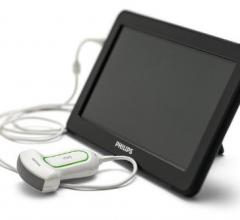If you enjoy this content, please share it with a colleague
Philips
RELATED CONTENT
Intensity modulated radiation therapy (IMRT) and volumetric modulated arc therapy (VMAT) planning is a time-consuming and labor-intensive process often producing inconsistent results.
August 1, 2014 — Thousands of healthcare providers weighed in to identify this year's top-performing vendor solutions in 23 different medical equipment and infrastructure categories. The "2014 Best in KLAS: Medical Equipment and Infrastructure" report is the culmination of feedback from providers throughout the world.
The key take away message from the Society of Cardiovascular Computed Tomography (SCCT) annual meeting in July was that CT technology is advancing rapidly and there is a strong feeling it will become the pre-eminent cardiac imaging modality.
Philips Healthcare has received 510(k) clearance from the U.S. Food and Drug Administration (FDA) to market its ultra mobile ultrasound system, Visiq, in the U.S. The system is the first Philips ultrasound system to combine the benefits of greater mobility, performance and simplicity into a single miniaturized solution, helping clinicians increase access to quality diagnostic scans for more OB patients.
More than 55 companies displayed their latest products and services at the American Society of Echocardiography (ASE) 25th Annual Scientific Sessions June 20-24 in Portland, Ore. The meeting is the largest for cardiovascular ultrasound. Highlights from the show floor included:
Although the fundamental workflow has not changed for treatment planning systems over the years, as technology improves, new features are added to enhance workflow and function.
Cardiac ultrasound technology has advanced to keep up with several trends. These include improved workflow for greater efficiency, expanded use of qualification metrics, expanded use of 3-D echo to speed exam times and improve operator reproducibility, and expanded use of 3-D transesophageal echo (TEE) to aid guidance in the growing area of transcatheter structural heart procedures. Here are a few examples of how the newest technology is addressing these trends.
The Society of Nuclear Medicine and Molecular Imaging (SNMMI) recently held its annual meeting in St. Louis. It provided an in-depth review of molecular imaging technologies, clinical applications, and translational and advanced research topics for molecular imaging professionals — nuclear medicine physicians, scientists, radiologists, cardiologists, pharmacists, technologists, researchers, and others involved and interested in nuclear medicine and molecular imaging and therapy.
DAIC Editor Dave Fornell shares his choices for the most innovative new technologies in nuclear imaging that were on ...
June 12, 2014 — Philips Healthcare recently introduced Vereos PET/CT, the first digital PET/CT (positron emission tomography/computed tomography) scanner, at the 2014 annual meeting of the Society of Nuclear Medicine and Molecular Imaging (SNMMI) in St. Louis. In addition to Vereos, Philips showcased a selection of molecular imaging solutions designed to deliver high image quality, critical clinical information and greater connectivity.


 August 07, 2014
August 07, 2014 




